Santa Fe’s Indian Market
Photos by Forrest and Donna Anderson
A century ago, about a dozen Native American artists displayed their work at the annual Fiesta in Santa Fe, New Mexico, as part of an effort by the Museum of New Mexico to keep indigenous art and culture from being lost.
Today, that display has grown into Santa Fe’s Indian Market, the largest and most prestigious juried Native American art show in North America.

A member of the Native Pride Dancers, who perform dances that blend modern and traditional Native American dance styles. The dancers perform in elaborate custom-crafted regalia adorned with beads, feathers, leather and ribbons.
This colorful extravaganza of exquisite Native American art, dance and culture, held in mid-August on the historic Santa Fe Plaza, typically draws some 1,100 Native American artists. Among them are many of America’s finest artists. Some 150,000 visitors and art collectors flock to see and buy.
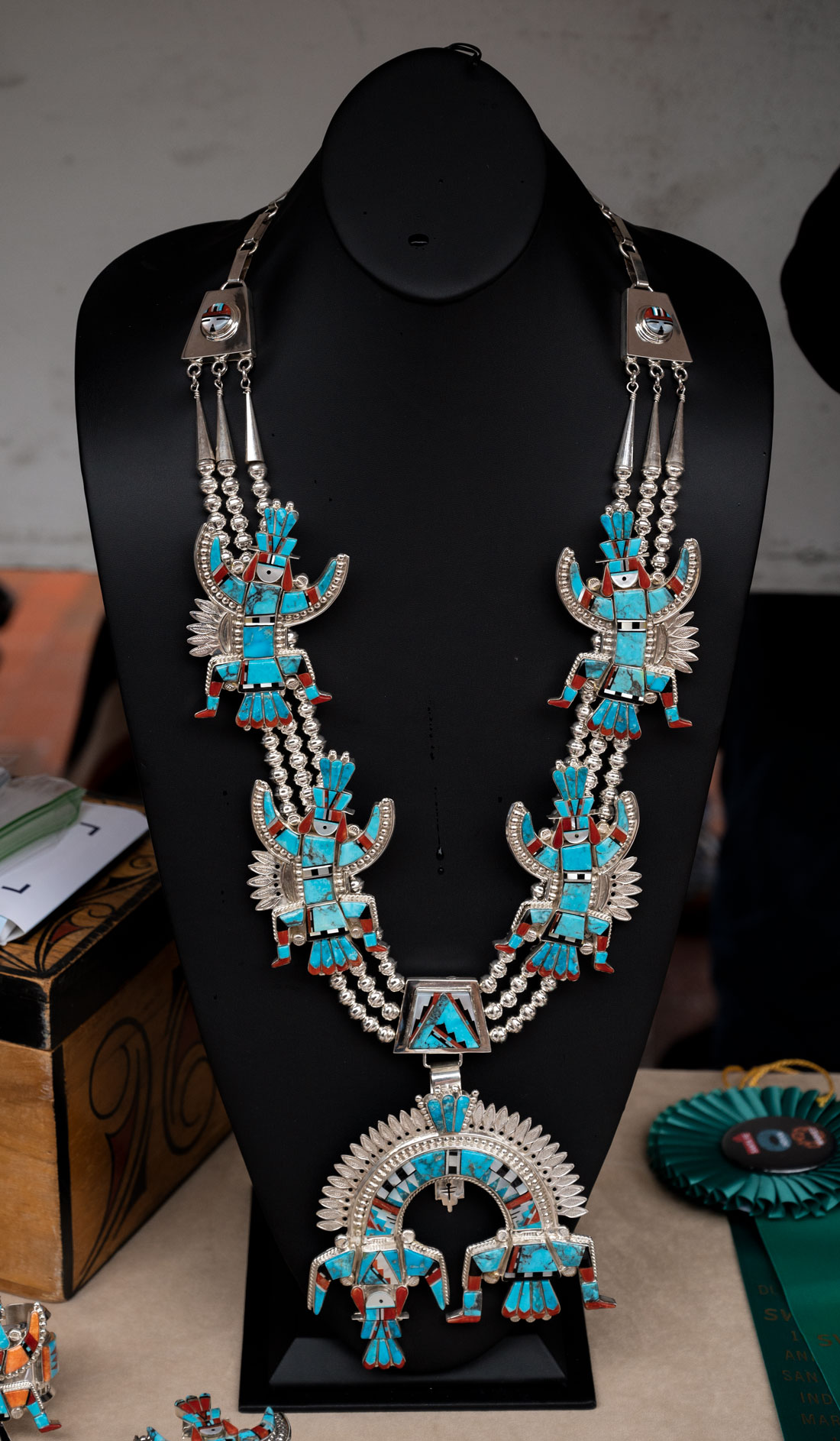
Necklace by Raylan Edaakie of the Pueblo of Zuni, New Mexico.
Native American artists from all over the United States and Canada sell an overwhelming variety of jewelry, pottery, sculpture, textiles, paintings, wood carvings, hats, beadwork, moccasins and other leatherwork, baskets, and other traditional and contemporary Native American art.
The artists represent more than 200 federally recognized tribes and First Nations. The several-day event includes an art competition in which artists are awarded ribbons and prizes. Then the market opens to the public and art collectors, who meet the artists and purchase their work.
The best of show sell for tens of thousands of dollars and represent both an astonishingly broad variety of art and an extremely high bar of fine quality art. It’s a world in which a single silver and inlaid stone bracelet sells for $9,000, a hand-made painted felt hat for well over several thousand and a pair of beaded baby moccasins for $250. These artists are the best of the best, some of them having honed their craft in the workshops of their parents and grandparents. Contemporary techniques and materials mix with traditional ones. Pottery designs that were lost centuries ago have been brought back to life by contemporary artists whose inspiration has been pottery found in archeological ruins.
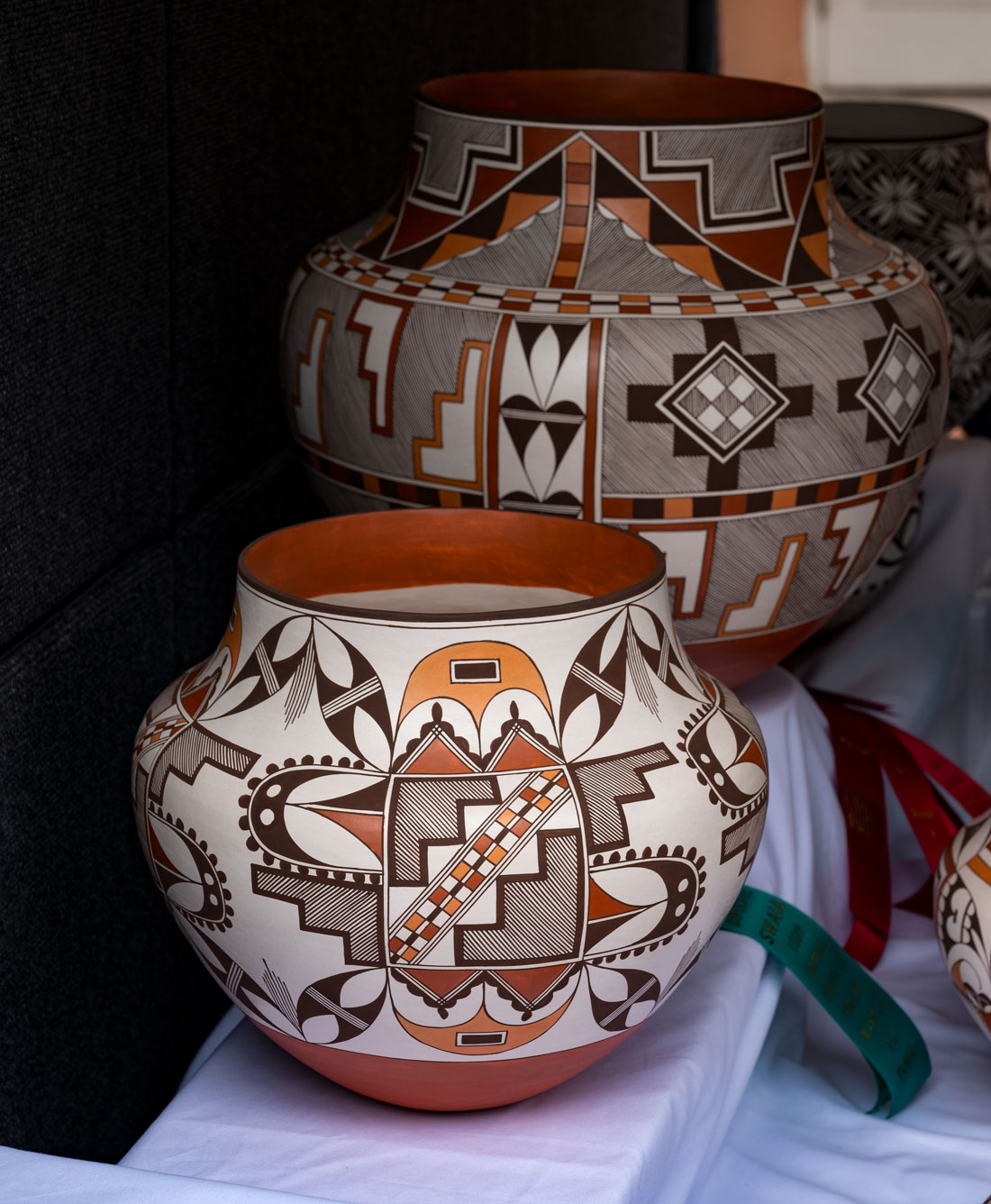
Pottery by Robert M. Patricio of Pueblo of Acoma, New Mexico. Robert takes inspiration from ancient pottery shards found in the area around the pueblo.
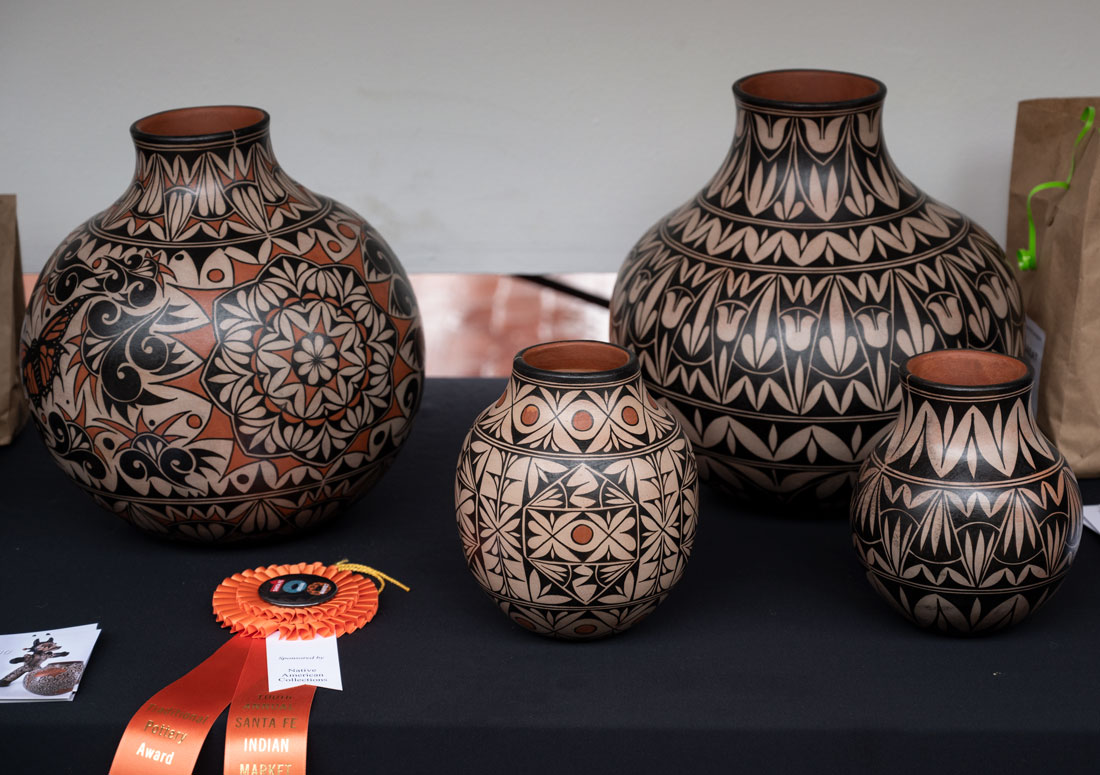
Pottery by Harlan Reano and Lisa Holt, Kewa Pueblo, New Mexico.
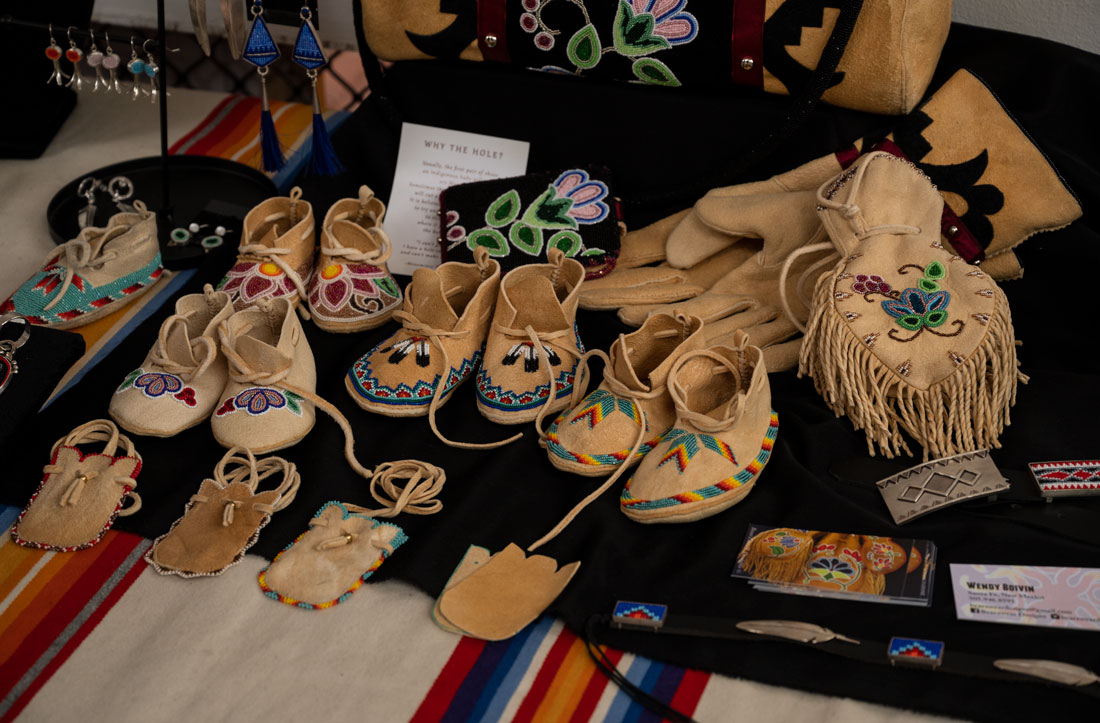
Baby moccasins by Wendy Boivine of the Menominee Indian Tribe.
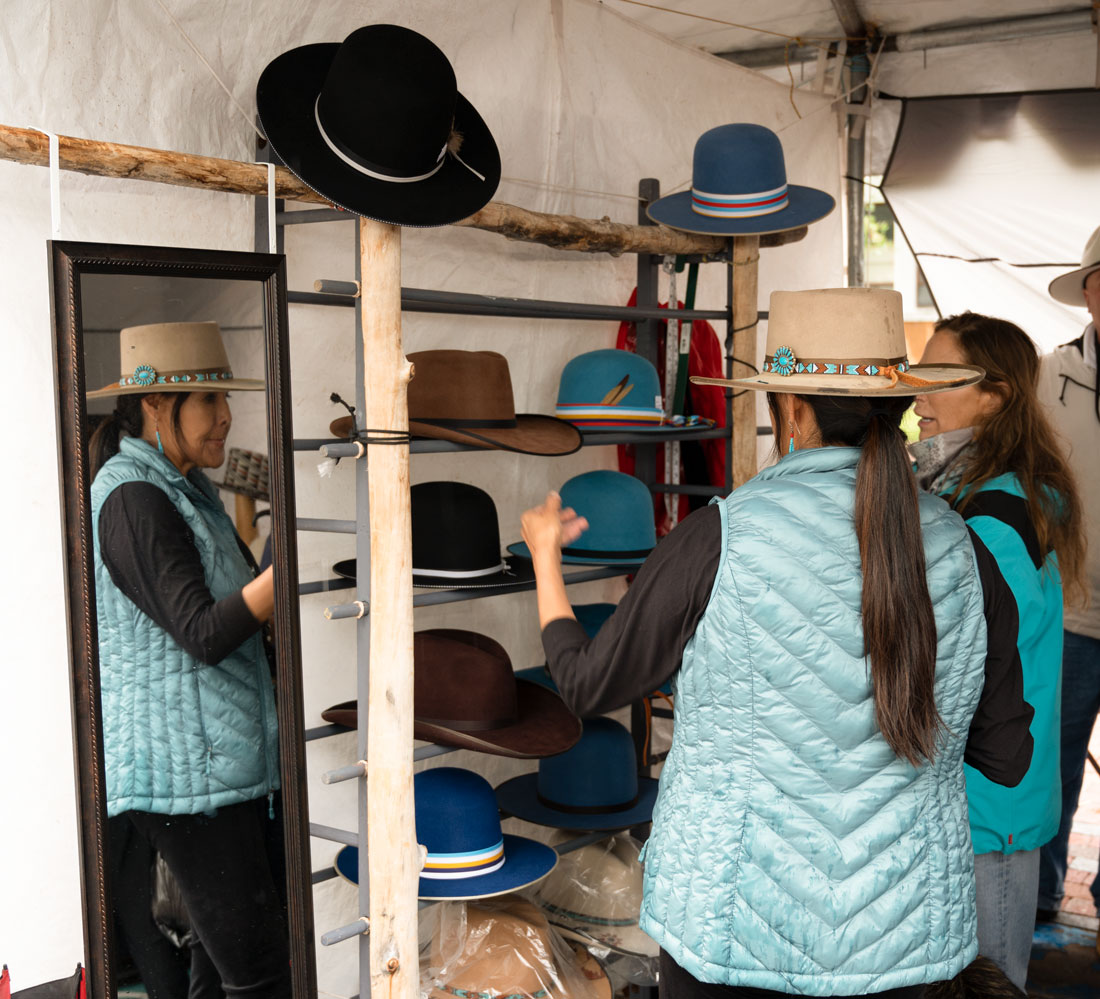
Melissa Lewis-Barnes, Navajo Nation, shows her handcrafted hats. Below, one of Melissa's exquisite hats.

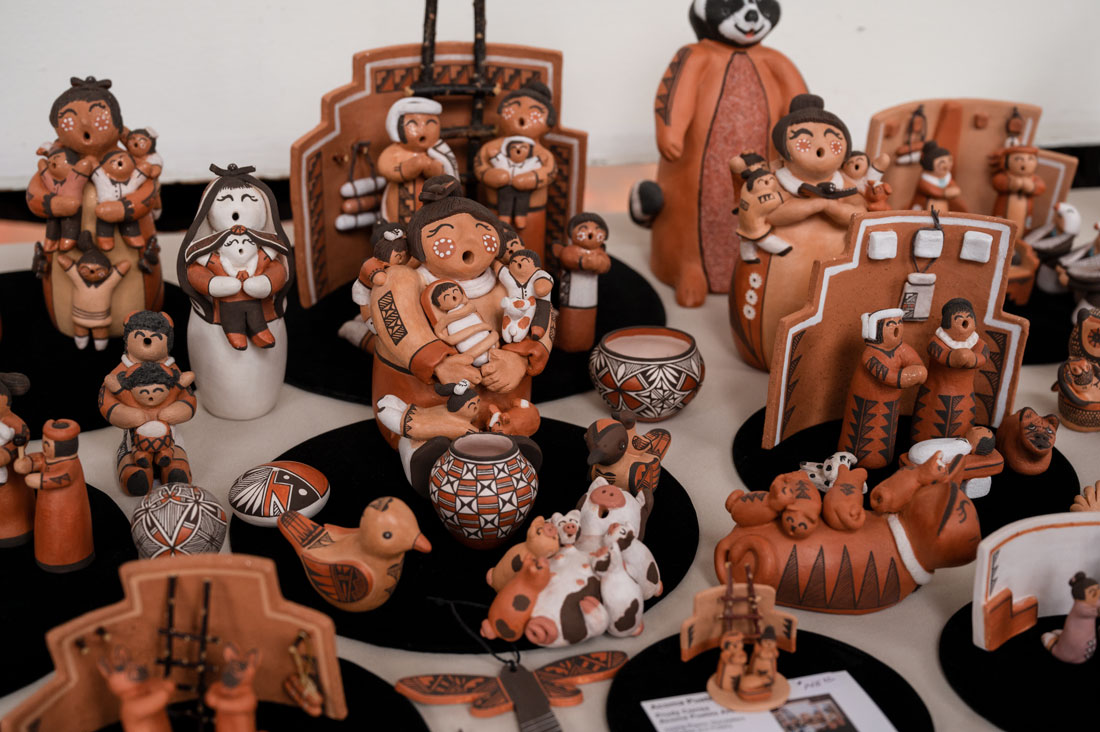
Ceramic sculptures by Prudy Correa, Pueblo of Acoma, New Mexico.
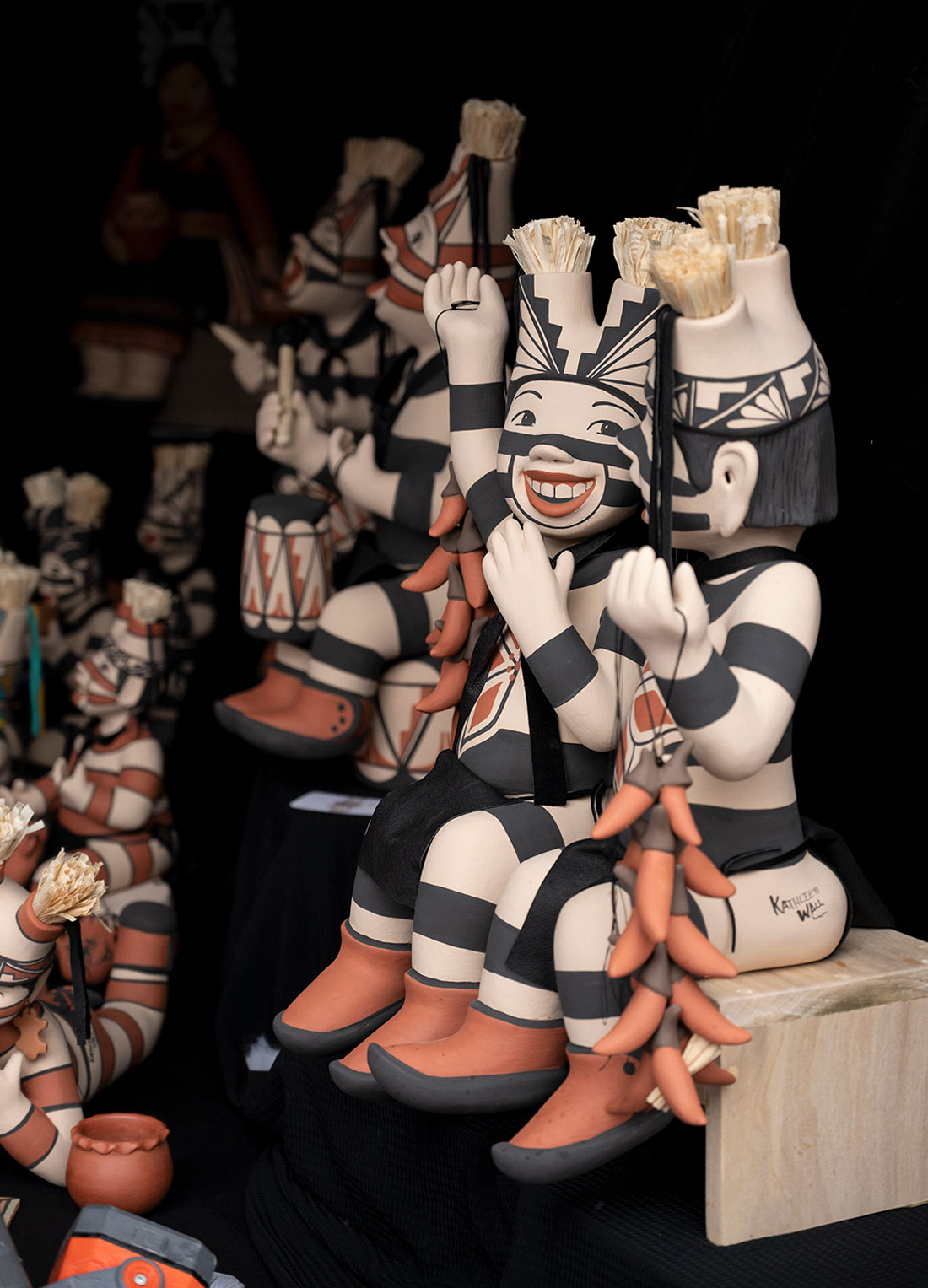
Ceramic sculpture by Kathleen Wall of the Pueblo of Jemez, New Mexico.
The finest artists are seasoned, having honed their skills and reputations over 35-40-year careers. Their distinctive styles of pottery and jewelry have contributed substantially to their pueblos’ or reservations’ reputation for particular forms of art.

Silversmith Tim Yazzie from San Felipe Pueblo, New Mexico. The bracelet below is a sample of the various styles in which Tim works.
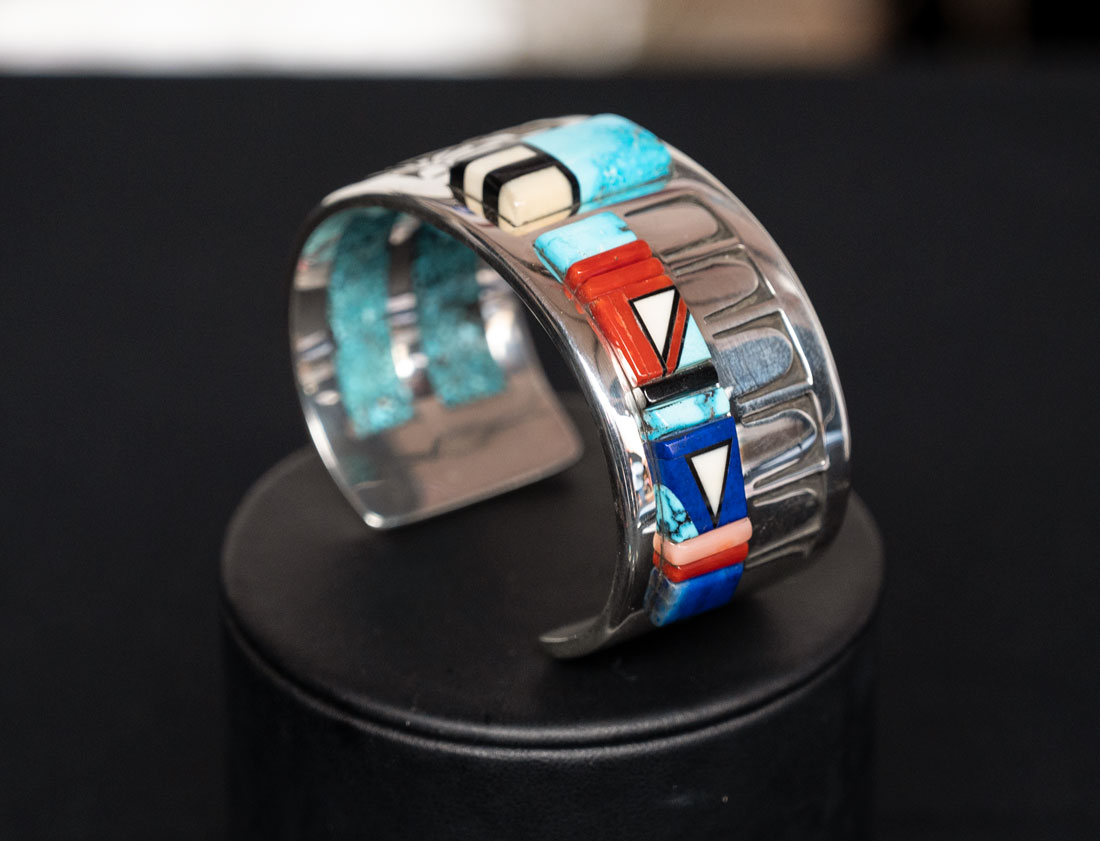
Some of the artists use techniques learned from older family members that they are now passing on to their children. Others have created new versions of traditional crafts.
This also is an event for young artists, some of whom won awards this year for finely beaded sneakers and brightly painted artwork that highlights contemporary Native American culture.

Beaded sneakers.
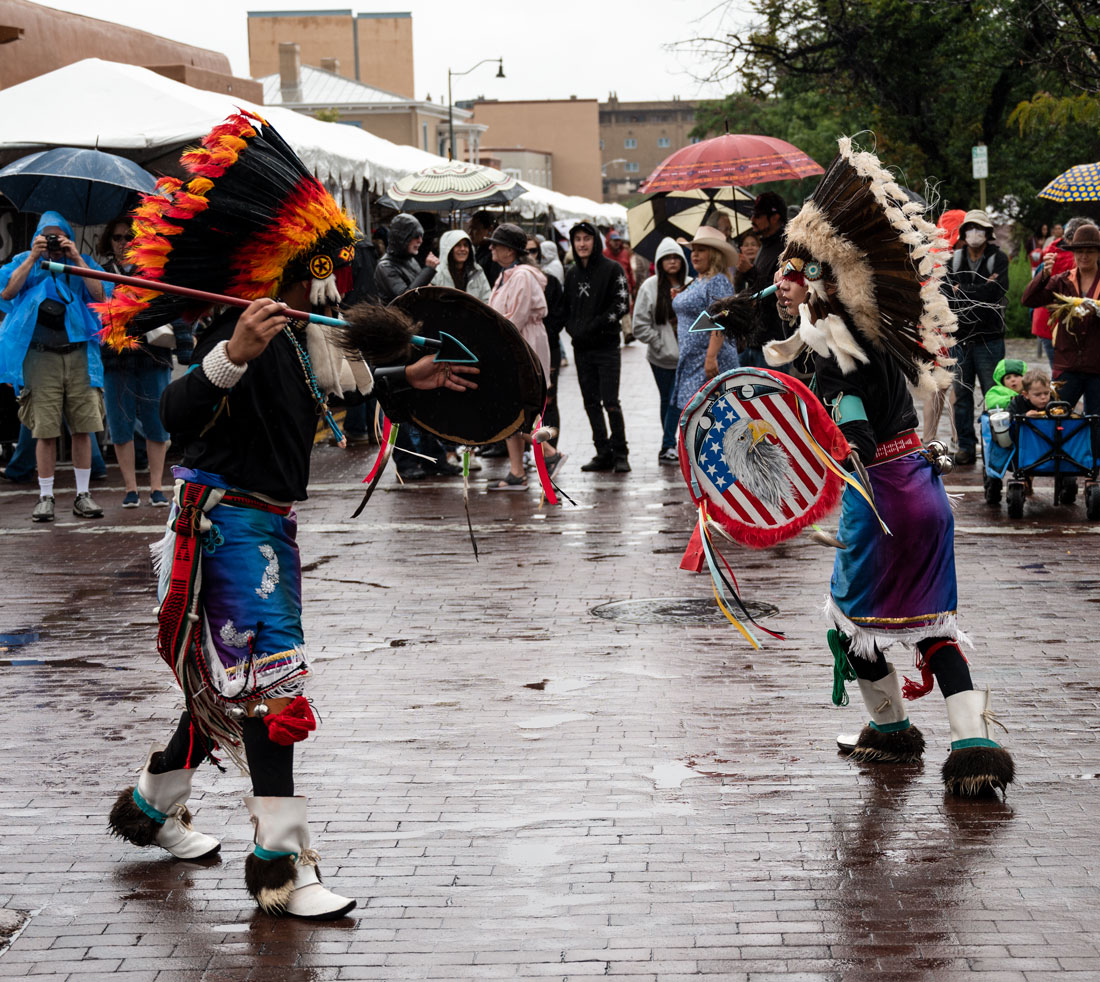
Dancers perform a warrior dance to the beat of drums.
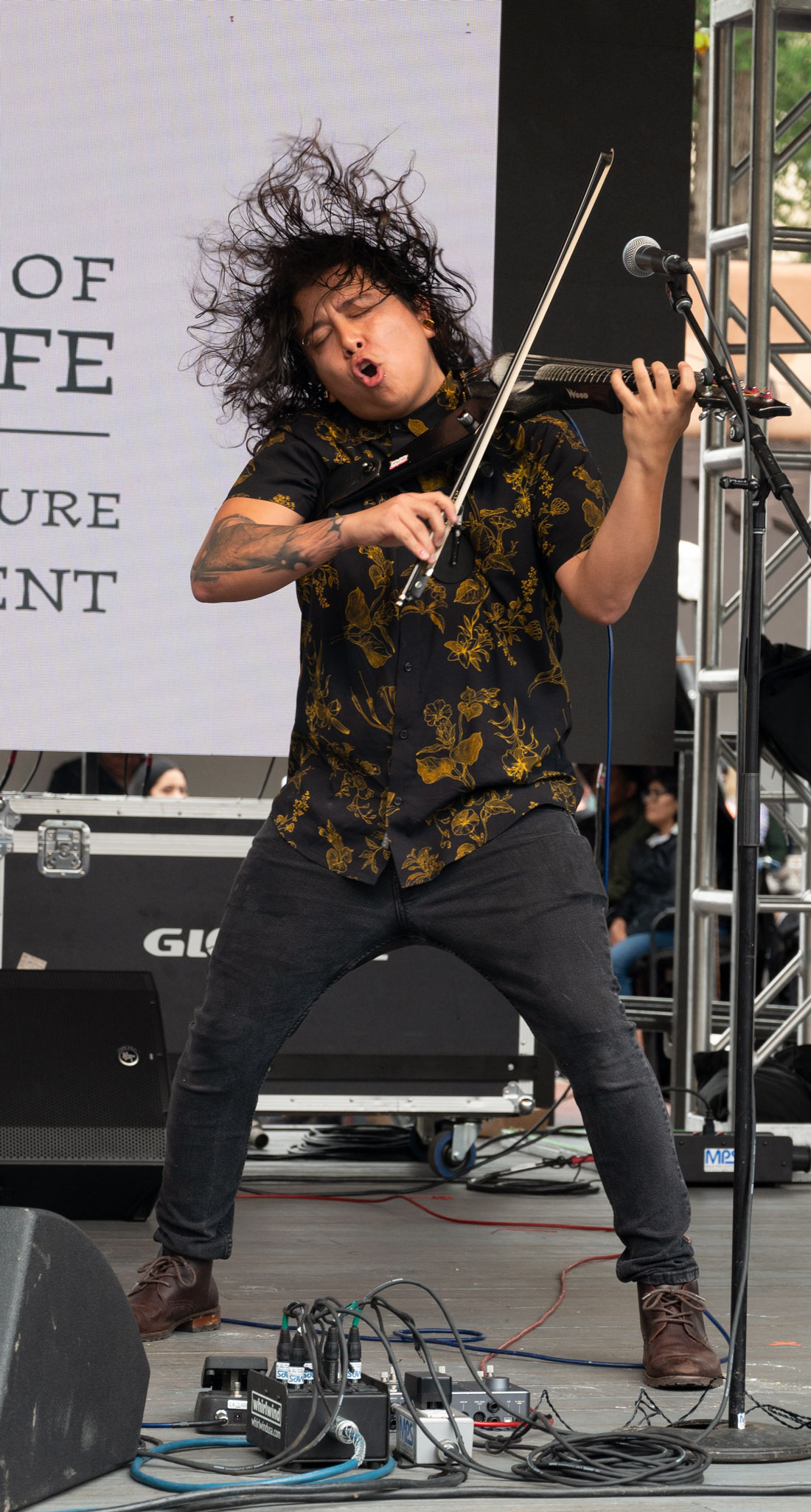
A Native American violinist performing.
Some artists’ work illuminates episodes in Native American history, such as a 19th-century era during which native artists created paintings on used account ledger pages (see the top photo).
Plains Indians had no written language, but they had a tradition of preserving oral histories in pictures on rock walls, buffalo hides, teepees and clothing.
European American people moving west to the Great Plains in the 19th century introduced the ledger book to keep inventories and accounts. Native Americans adopted it, drawing paintings over inventory lists made by previous owners of ledger books.
The most famous of these drawings were made by Plains Indians who were imprisoned at Ft. Marion in St. Augustine, Florida, from 1875-1878. The prisoners sold their artwork, leading to a demand for native ledger art. Eventually, artists began making ledger drawing specifically for sale. The art shows ceremonial and daily life and is used as a way to remember the Plains Indians’ way of life before they were forced onto reservations. A number of artists as this year’s market sold ledger art.
The event is also an opportunity for Native American dancers to perform traditional dances and promote indigenous culture.
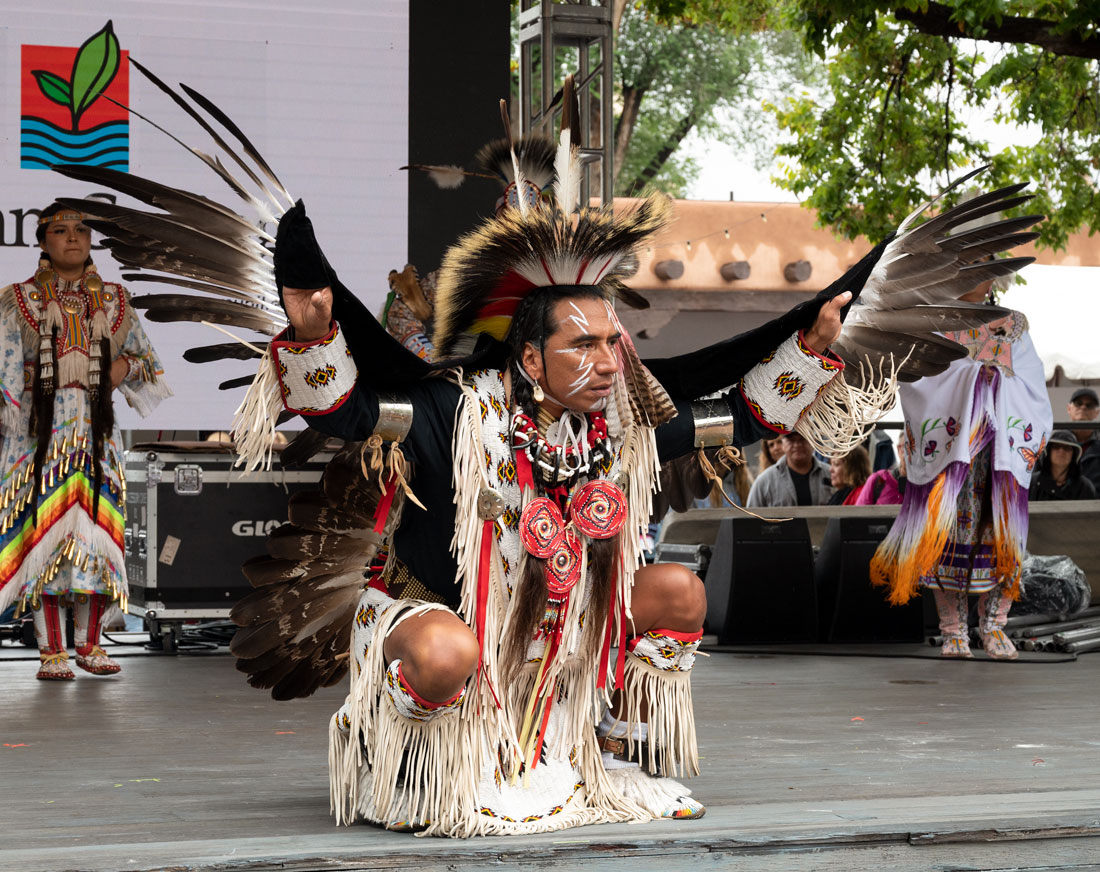
Members of the Native Pride Dancers perform.
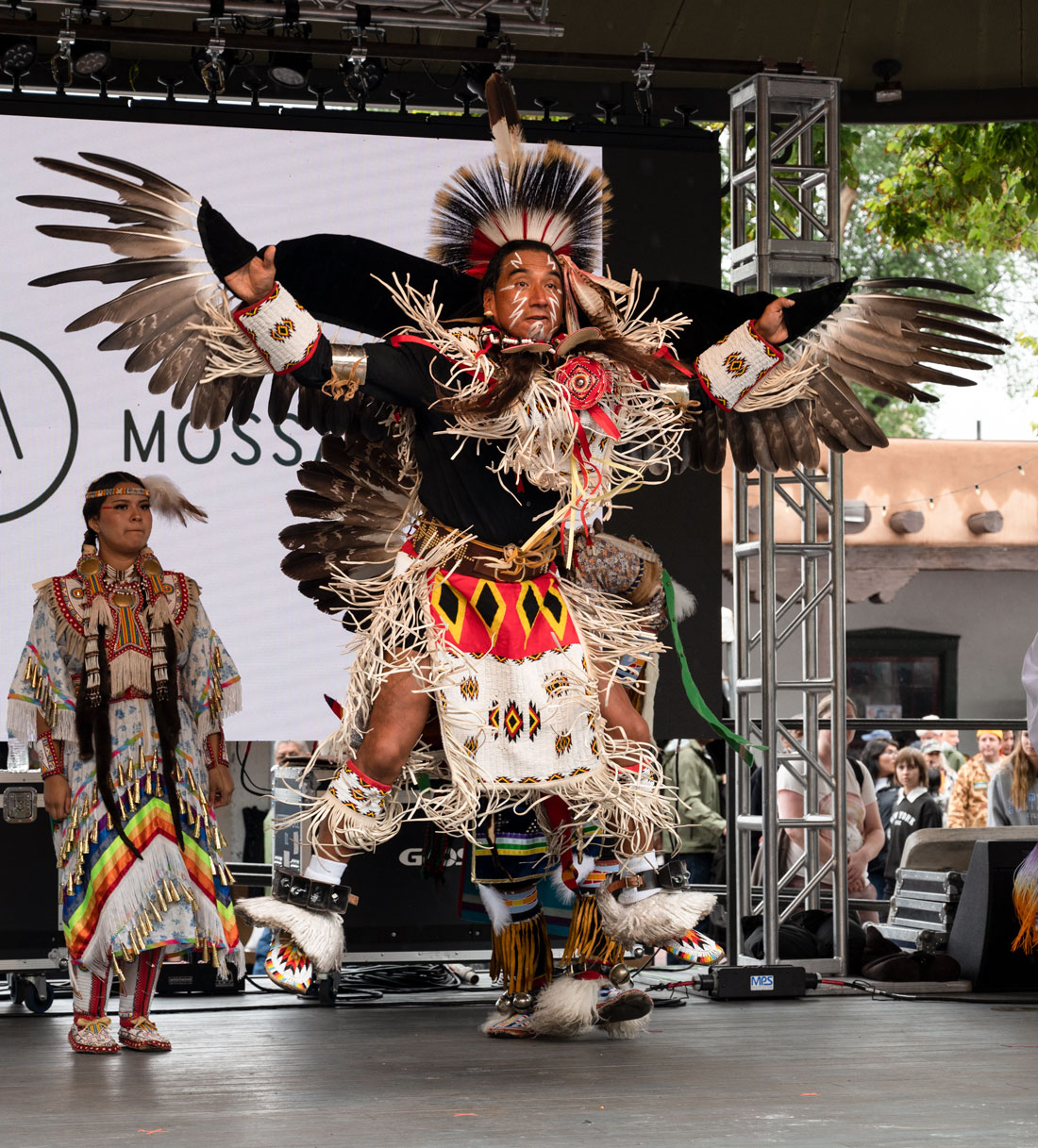
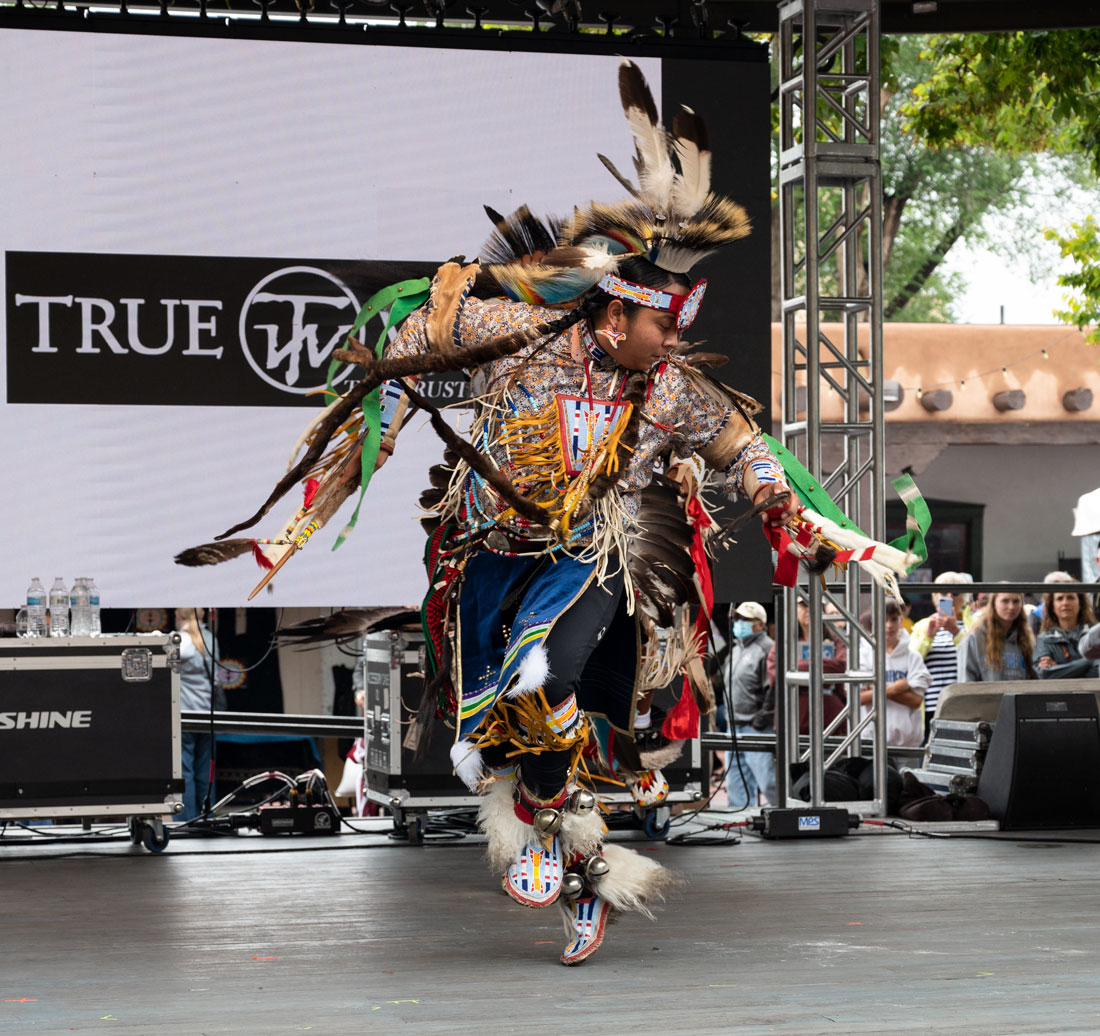
The original aim of the market when it was started in 1922 was to create a space to revitalize native artwork and apprecaiation for it beyond the creation of souvenirs. The market originally was part of Santa Fe’s annual Fiesta, but has grown into its stand-alone festival among Santa Fe’s annual calendar of festivals and art events.
The market got a boost by a surge of interest in Native American culture in the 1960s amid Native American political activism that sparked a resurgence of native pride and culture. The market gradually grew into an event now attended by people from all over the world.
The market is organized by the Southwestern Association for Indian Arts. It brings in $160 million annually to the Santa Fe area.
The market is an opportunity to hear the stories of Menominee artists whose tribe has a thriving forestry industry based on careful conservation and management, an Alaskan native who makes exquisite seal skin thimbles and hunts seals, the story of a sixth-generation silversmith in a New Mexio pueblo.
The market also is a chance for New Mexico to showcase its rich native cultures. The state is home to 19 pueblos, part of the Navajo Nation and two Apache reservations, all of whom have long artistic traditions.
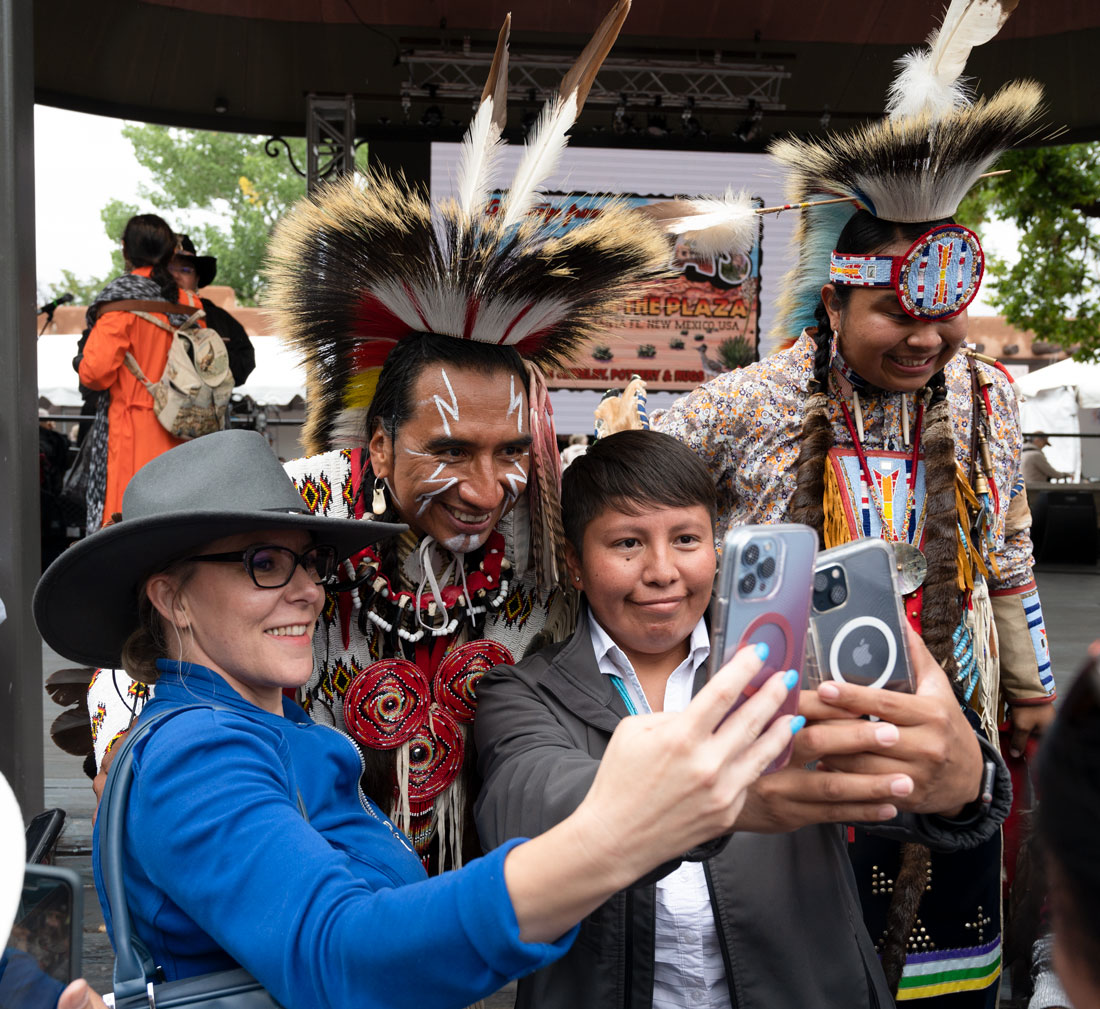
A member of the Native Pride Dancers takes photos with spectators.
Check out these related items
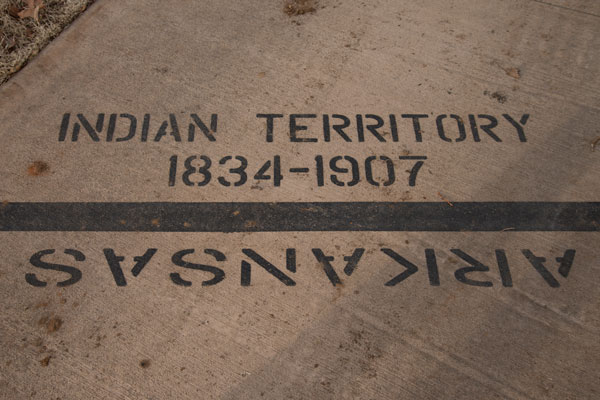
Nations Within a Nation
The first Native American to become U.S. interior secretary must deal with a fraught history of government-Native American relations.
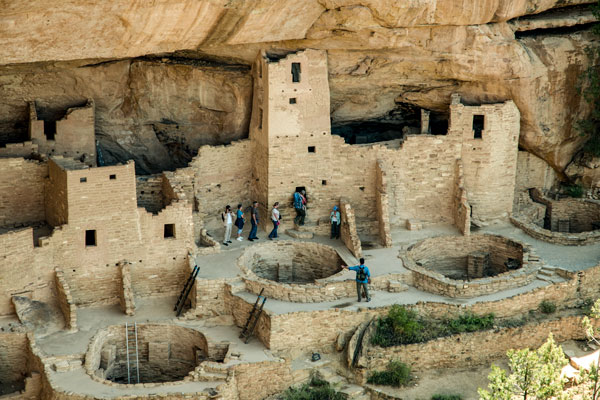
Reconstructing the Story of an Ancient Civilization
Researchers are piecing together an ever-clearer picture of the ancient civilization of the American Southwest called the Ancestral Puebloans.
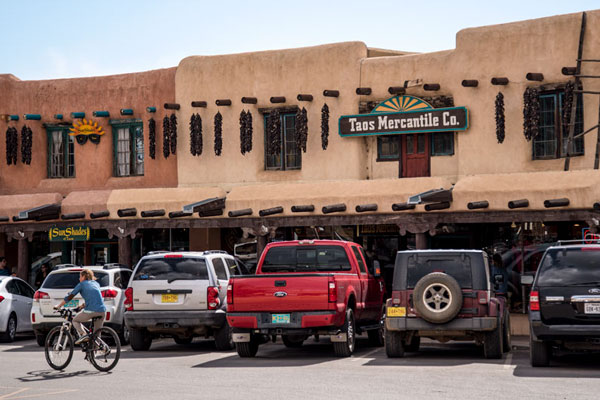
The Booming and Broiling Southwest
The American Southwest is the fastest growing region in the United States, but also the hottest and most arid.
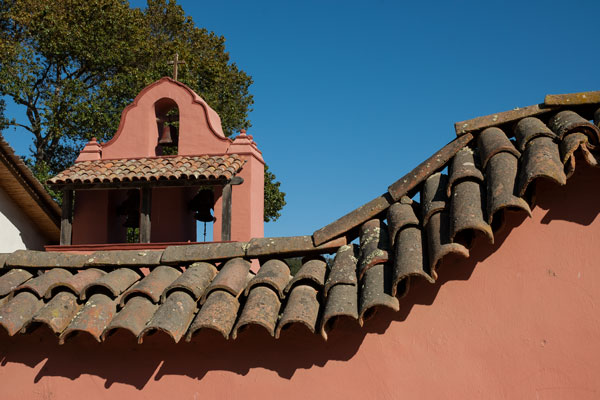
La Purisima Mission
The history of La Purisima Mission in Lompoc, California, is a cautionary tale about the consequences of environmental damage, epidemics and racial inequality.
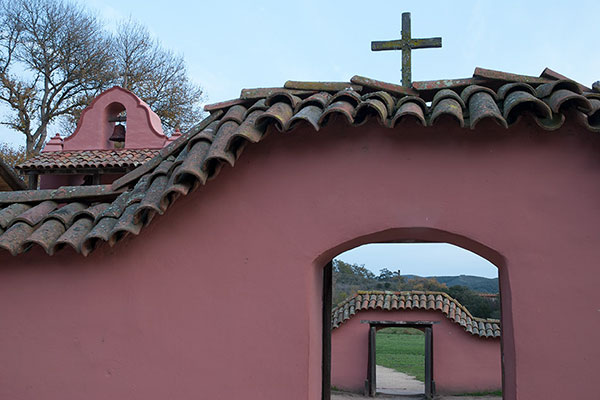
The Land of Junipero Serra
Junipero Serra's "sainthood" is controversial, but the extent of his cultural impact on California is indisputable.
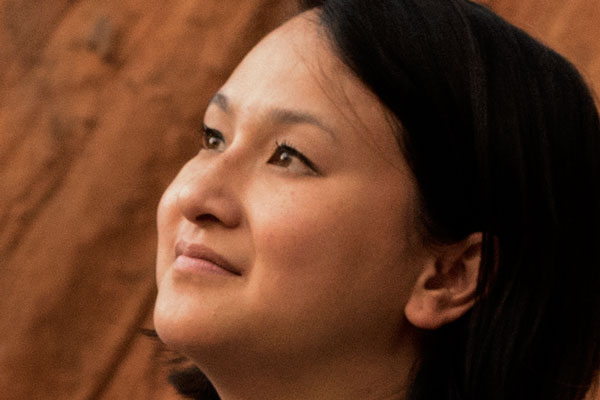
Dawning of a New Era of Diversity?
Despite dismal headlines about the racial divisiveness of the United States, several long-term trends point to a future more mature culture of diversity and cooperation.
